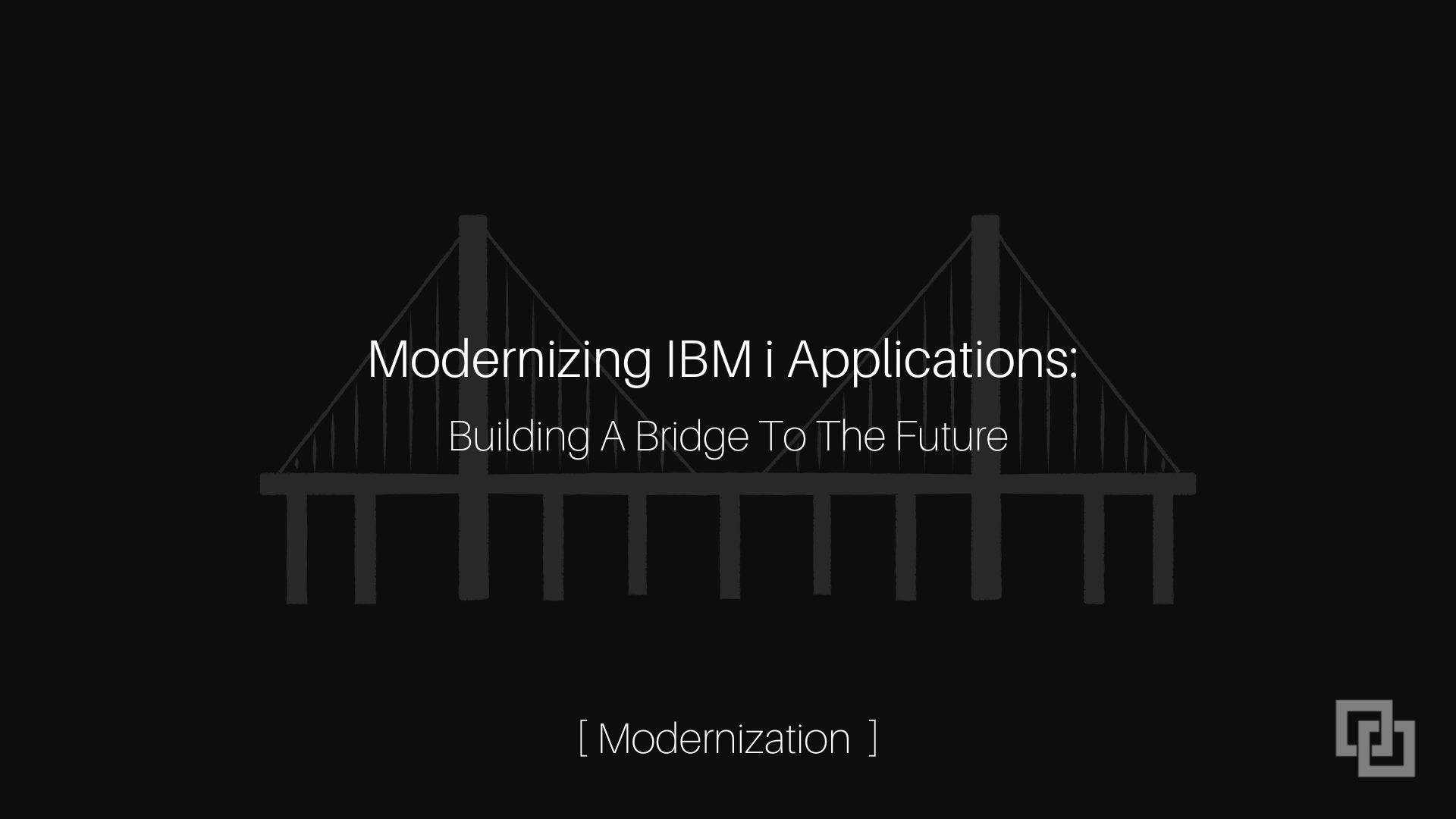Modernization efforts are in full swing.
Today’s IBM i shops are seeing rapid changes in the business landscape that require new ways of thinking, new business processes, and innovative technology solutions.
This is leading traditional AS/400 shops to a critical decision point when it comes to their ERP systems:
Should they modernize their existing IBM i applications or migrate to another platform?
While migrating to another ERP system is an option, like when an organization consolidates to one common ERP platform, this usually makes sense when the organization already has existing technical resources.
However, as we have covered before, a new ERP is not always the answer:
“We have spoken to clients who have tried to go down the ERP transformation path and have either failed and reverted back to modernizing their legacy systems, or spent an obscene amount of money to implement a new system to get a solution that is not at all what they expected.”
We firmly believe that “that decision-makers need to have a thoughtful discussion around a new ERP vs modernizing their existing ERP.”
Here, we explore the benefits of modernizing IBM i applications and how it offers a solid bridge to the future, ensuring a seamless transition to new features and functionality while preserving the stability and reliability of the IBM i platform.
Step 1: Decommissioning RPG Applications and Modernizing Mission-Critical Ones
The first step in building a bridge to the future is to assess and decommission RPG applications that are no longer needed. By identifying and retiring outdated RPG applications, organizations can streamline their systems, reduce maintenance costs, and free up resources for modernization efforts.
It is equally important to identify the mission-critical RPG applications that require modernization. These applications form the pillars of your business operations and enhancing them will ensure their compatibility with the evolving technological landscape. Through modernization, organizations can leverage modern RPG free-form, SQL and tools like RPG Open Access (OA) or refactoring techniques to transform these applications, making them more flexible, modular, and easier to integrate with modern and open source technologies.
Step 2: Extending Reach with APIs and Web Services
Once mission-critical RPG applications have been modernized, organizations can leverage the power of APIs and web services to extend their reach and enhance interoperability.
APIs and web services act as connectors between applications, systems, and even external stakeholders. By exposing well-defined APIs, organizations can enable seamless integration and data exchange between their modernized RPG applications and other systems, such as mobile apps, cloud services, or third-party platforms.
This step not only expands the functionality of RPG applications but also allows organizations to embrace a more service-oriented architecture. APIs enable the creation of an ecosystem where different applications can communicate and share data, empowering organizations to adapt and scale their operations more efficiently.
Step 3: Leveraging Open Source Development Stacks
To build fully functional browser applications that leverage core IBM i applications, organizations can embrace open-source development languages and tools like PHP, Python, Node.js, Javascript, and frameworks like Bootstrap, just to name a few.
Leveraging open-source technologies allows for the development of modern, user-friendly, and browser-based applications that seamlessly integrate with core IBM i applications.
By utilizing JavaScript frameworks and tools, organizations can create interactive and responsive user interfaces, while Node.js provides a scalable and efficient runtime environment for server-side development. Additionally, frameworks like Bootstrap provide a consistent and responsive design across various devices. Leveraging these open-source technologies enables organizations to harness the latest web development trends, build modern browser applications, and ensure a smooth user experience while leveraging the power of their core IBM i applications.
Step 4: Integration Through Best-of-Breed Solutions
In many cases, organizations may find that their modernization efforts can benefit from integrating best-of-breed software solutions.
“The biggest shift we see in the IBM i community (maybe it is because of the type of companies that are reaching out to us for assistance) is organizations that are looking to modernize and leverage their ERP system by integrating it with various enterprise-grade platforms, such as PLM, eCommerce, BI, LMS, and HCM.”
This approach ensures that the modernized IBM i applications integrate seamlessly with external systems or offer enhanced functionalities not readily available in-house.
By carefully assessing their requirements and considering the strengths of different software solutions, organizations can choose tools that complement their modernized IBM i applications. Whether it’s an advanced analytics platform, a customer relationship management system, or a specialized module for a specific business process, integrating best-of-breed solutions alongside modernized RPG applications allows organizations to achieve a comprehensive and optimized technology stack.
Key Takeaways:
We have been recruiting in the IBM i space for over 25 years, and more than ever, we are seeing IBM i shops embrace the modernization of their existing systems.
With a well-planned modernization strategy, organizations can build a bridge to the future by decommissioning obsolete RPG applications, modernizing mission-critical ones, leveraging APIs and web services, embracing open-source development stacks, and integrating best-of-breed software solutions that collectively pave the way for a modern and flexible IT landscape.
Modernization allows organizations to stay competitive, drive innovation, and deliver exceptional value to their customers and stakeholders.
The path to the future is clear, and with the right steps and a well-executed modernization strategy, organizations can embrace the endless possibilities that lie ahead.
We are truly in exciting times.
